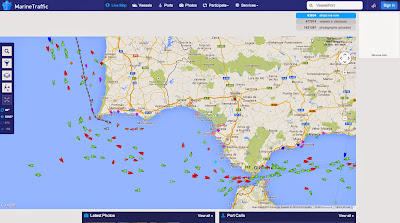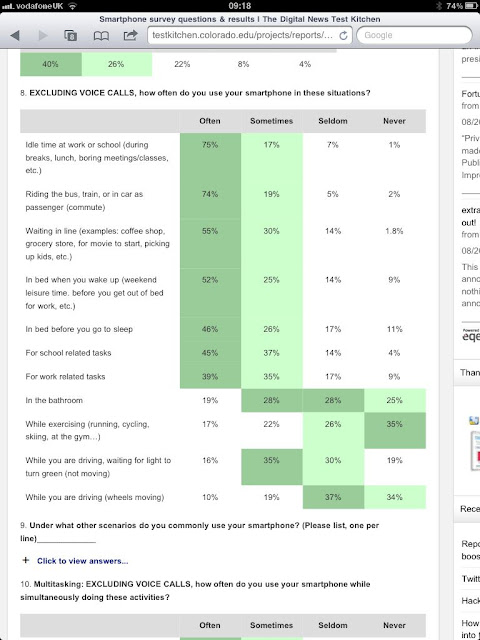From materials and commentary prepared by John Pettit (2008)
Of courses it is learning if it is on a mobile phone or any other device. Do we mean informal or formal learning? Vicarious learning or didactic? Stumbling across knowledge, or reading formerly to pass an exam? Does it matter? These devices blur the distinction between a means of educating that may eventually look dated and specific to an era.
Do we need campus based universities?
Kids can have their kicks in Ibiza then study online while holding down their first job.
Give the campus over to the retired and unemployed.
Do we need schools?
And if so, instead of being at the centre of a child's education, perhaps they become as tangential as a visit to the leisure centre of supermarket because you are better linkedin to the educators and the content when you're away from the place and all its distractions.
When do you ever not learn even if you don’t know it?
It depends entirely on what the device is being used for. Apps have shown how versatile we are at throwing activities and qualities at these devices. People want this stuff.
Is a laptop mobile? What about the old Apple Classic? I used to take it out into the garden on an extension cable and view it inside a cardboard box while sunbathing. Was that mobile? I can read in the bath on a Kindle and click through RSS feeds on the iPad while the Kettle boils. Might it simply feel as if all these people are following me around?
There are degress of mobility. Working in TV we carried around with us monitors to watch content back during a shoot. The thing was no more portable than a hod stacked with bricks.
When I read formal and informal learning I wonder if this equates to whether the learning is hard or easy. I have acquired knowledge in a formal setting and had a laugh, equally in an informal context without the self-motivation and will I have found informal learning very hard to do.
It is sometimes claimed that handheld digital devices allow students to learn at anytime, anywhere. A more nuanced position argues that the devices have the potential for ‘any time anywhere’ learning but that many other factors come into play.
For example, some devices may be easy to handle but have small screens that don’t allow easy reading.
Far from being hard to read the small screen is better suited to the narrow field of close vision that we have. So what if it is like looking through a letter box. If you want to concentrate why look at more?
A device can become too small. Too portable. As a video producer I have seen kit shrink so much that a device the size of a child’s shoe will generate a HD image and for $75 a day you could hire a camera that delivers 35mm quality. Making a film though with a device so small creates instability, you need some weight on your shoulder if you want to keep the image steady.
The portability and size of screen is less relevant than the affordances of the device, the fact that an iPad doesn’t support Flash, or Android is having problems with Google Apps, that is, if you are using learning materials that require specific functionality that isn’t working.
As for screen size, people may watch a blockbuster movie on a giant screen at the Odeon Leicester Square or on a Smartphone or palm-sized gaming device that is no bigger than a spectacle case; here what matters as with any movie, is the quality of the narrative, not the size of the screen.
Where a device’s portability comes into its own, as the person who recently made a phone call from the top of Everest, is the portability. Another extreme might be a cave diver with a device the plots the route for a cave system, or a glaciologists relaying pictures of a feature in a Greenland ice-sheet to colleagues thousands of miles away that informs the research.
‘Patterns of usage differ widely, and the fit between people’s lives and the devices they use can be very close.’ (Pettit and Kukulska-Hulme, 2007, p.28)
Is an apt way to express a new term being used in the Open University Business School to describe applied or practice-based learning that gets away from the ‘distance’ tag, that is to call it ‘nearness’ learning. (Fleck, 2011). I also like the idea of ‘intense but provisional,’ people’s attitudes are brand specific, with the Mac vs. PC split of computing now a split between Windows, Mac and Android (and others).
People chose brands to simplify the choices that have to be made between a plethora of devices, between Sony, Nokia, Goole and Windows, as well as between network suppliers, be that O2, Vodafone or others.
There is another way of looking at it though, if you come to see that all these devices offer the same sets of services and tools, from QWERTY keyboards, to a camera, from messaging to phone calls, to the hundreds of thousands of Apps, and in the case of the latest Windows phone … Windows software from Outlook to Docs, PPT to Excel.
Is size such an issue?
People have managed needlepoint for centuries and once painted miniatures. There is an appeal for the tiny sometimes, just as there is for the massive. In this respect the device becomes a reflection of the person’s personality, as well as the depth of their pockets, the availability of others services, from a signal to 3G (or not), even to the power to charge batteries.
Personal choice, celebration of variety, offering a smorgasbord rather than the continental breakfast.
‘That well-known random-access device consisting of ink on bound sheets of paper may still have plenty of life in it yet!’ (Pettit and Kukulska-Hulme, 2007, p.28) expressed in 2007 is how in 2011 writers in the e-magazine Reconstruction 6.4 describe the ‘long-tail’ of the blog, that definitions have become meaningless, suggesting that the varieties of ways to do or have what we have continued to call a ‘blog’ is as varied as the ways we have over many centuries come to use paper.
Drawing on a paper written in 2007 on research presumably undertaken a couple of years previously, it strikes me that ‘the world has moved on’, to say the least – though not enough. This exercise is looking at the extraordinary capabilities and uses for a device that in 2011 can offer somewhat more than was possible four years ago. This doesn’t mean to say we have the things.
From my own perspective I came into the MAODE (this time round) with an eight year old iBook that had trouble with some software, things as simple as PDFs and the latest versions of Flash as I was unable to upgrade the operating system. Working from a smallish screen I found myself printing off too. For the second module I had access to a better laptop and plugged it into a good-sized screen that allowed me to see a page of A4 at a time or to swivel the screen and have two windows open side by side. During the course of my third module (this one) I found myself without a particular device, but with access to a desktop, a laptop, even an iPad (and have used a Kindle to read some 16 books). Here I found myself putting everything online, into a blog and e-portfolio so I could access whatever I wanted wherever I was (or whichever device was available), as well as having the cataloguing, aggregating, sharing affordances that this has given. Any device, however mobile, and whatever size, can tap into this content.
The problem now, isn’t simply, for me at least, is the overwhelming volume of content I have put online, which despite adopting various approaches to keep track of it, has split into a number of blogs (OU, Blogger, WordPress, and Tumblr), a number of cloud galleries/warehouses in the sky (Flick, Dropbox, Kodak and Picasa Galleries, My Stuff, Pebblepad).
It is apt that I blog under the name ‘my mind bursts’, because it has, and is.
Like having a thought, or recalling some event or fact seemingly on a whim, I find I stumble across these ‘mind bursts’ quite by accident, forgetting the number of blogs, for example, that I for a period started only to abandon so that ‘serendipity’ has a role to play through the myriad of links I’ve also made. None of this has helped by finding myself with three Facebook accounts and unsure how to delete the ‘right’ one.
The attitude can only be to ride this like the web surfer of a decade ago – to run with it, rather than try and control it. You meet friends coming off a training a Liverpool Station, you do not need to know who else is on the concourse, the timetables for every train that day, week or year. To cope with the overwhelming quantity of stuff tools to filter out what matters to you at that moment is coming to matter most.
Currently I find myself repeatedly drawn to the activities of Hugo Dixon, a former Economist and FT journalist, who set up a business he called ‘Breaking Views’ to counter what he already by then perceived as a deluge of online information and the old print-based expression ‘Breaking News’; we would come to need as some pundits predicted fifteen years ago, ‘information managers’ or ‘information management systems’.
I wish I could reference the expression properly but ‘Freedom is lack of choice’ is one of my favourites; sometimes filters and parameters have their place. I enjoy using a Kindle as much for its limitations; it is something I can take to bed knowing that it’ll send me to sleep, while an iPad keeps me up all night.
REFERENCES
Fleck, J (2011) Association of MBAs Conference Video 2011
Pettit, John and Kukulska-Hulme, Agnes (2007). Going with the grain: mobile devices in practice. Australasian Journal of Educational Technology, 23(1), pp. 17–33.







